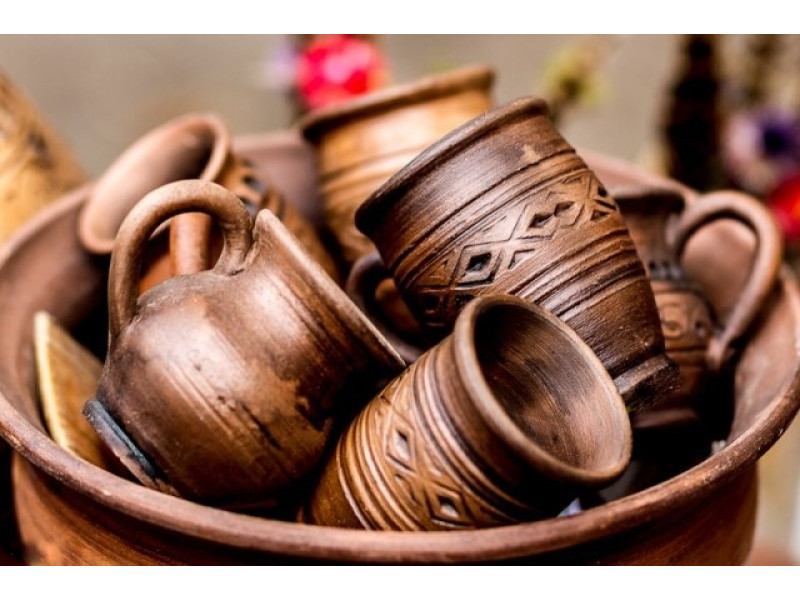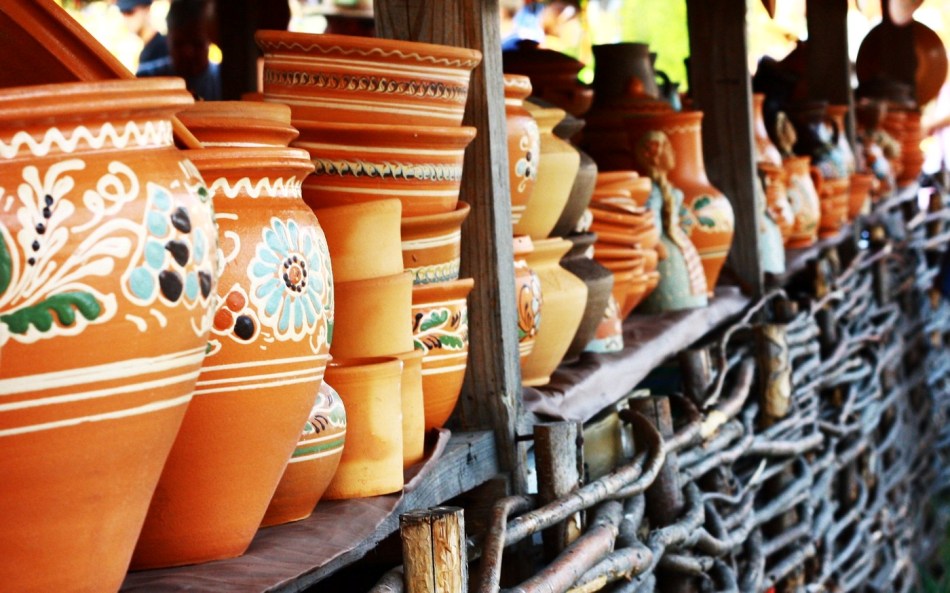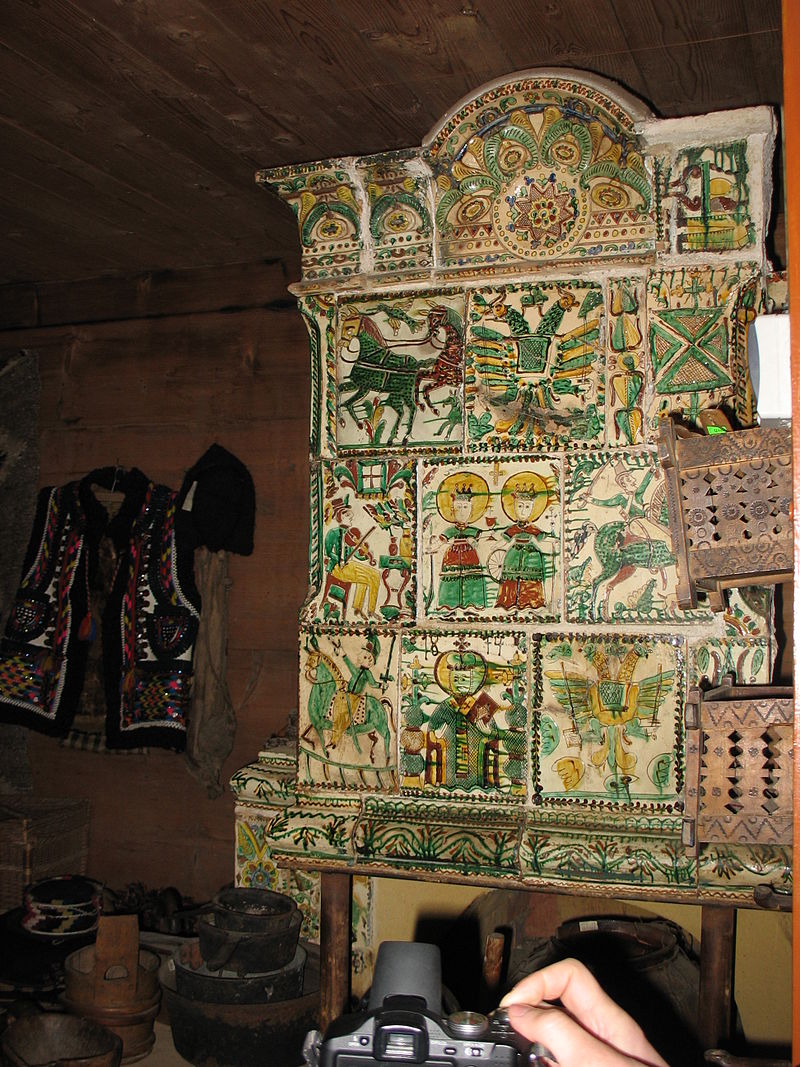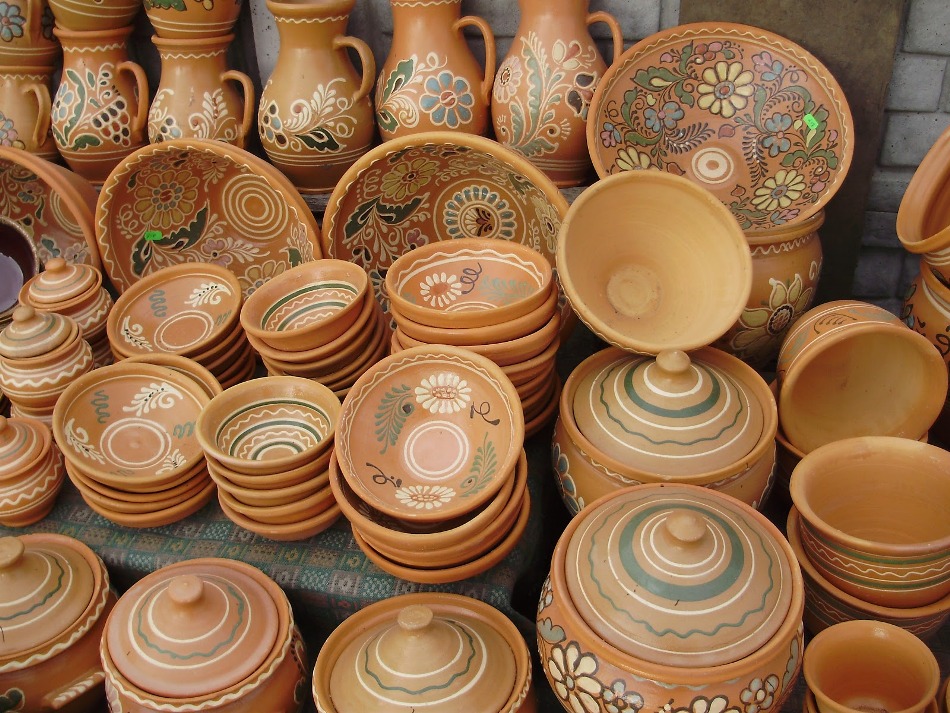Pottery is the art of creating a wide variety of products – dishes, toys, tiles, decorative items – from fired clay. Pottery always looks very unique and original. It becomes a true decoration of any meal, a kind of touch to the centuries-old experience of our ancestors. The imagination immediately draws a jug of steamed milk, a bowl of Ukrainian borscht, a fragrant roast in a pot, dumplings with cheese on a watered plate, etc.
History of Ukrainian pottery
Since the delicacies of Ukrainian cuisine are known all over the world, it is not surprising that dishes have always played an important role. Of course, the dishes that were traditionally used by Ukrainian housewives were made by hand and decorated with various amulets and symbols. It is certain that pottery traditions also helped create real culinary masterpieces.
Therefore, we offer you a selection of the most valuable cultural heritage in the pottery industry. We will focus in detail on the main types of ceramic products that are now being reborn from the ashes and becoming incredibly popular.
This modern industry allows us to produce and, of course, buy household goods for every taste. And once our ancestors did not have any factories, crystal, glass, technologies and similar modern advantages. Everything that was necessary for humanity, craftsmen made exclusively with their own hands. Clay dishes were no exception.
The art of making ceramics originated in the Neolithic era and has steadily developed to this day.
The Ukrainian history of ceramic tableware production has several pages of its development: Neolithic, Early Slavic, Chernyakhiv, Old Russian and medieval eras. This industry in Ukraine experienced its highest flourishing in the 17th-18th centuries.
Initially, potters sculpted their wares by hand, applying a finger-thick layer of clay to baskets, stones, or whatever, or wrapping a clay “sausage” in a spiral, gradually forming a conical-shaped vessel.
This technique is well-studied and easily withstood competition even after the invention of the potter's wheel.
In the 4th millennium BC, the potter's wheel was invented. At first, it was manual and very slow, and in the Middle Ages, a foot-driven wheel appeared, which made a real revolution in the field of pottery. This technique not only accelerated the production of ceramic dishes, but also raised the artistic level of such products. Dishes made on the wheel became lighter, thinner and more harmonious. It became easier to draw geometric ornaments on them. In the Old Russian state, from the 10th century, the production of clay dishes in cities flourished significantly and glazes appeared on dishes. At first, they were opaque, and later transparent. At the same time, the variety of types of dishes expanded - containers for storing food, pots with lids, jugs and mugs.
In the 14th century, tableware was quite cheap, and practicality was preferred. It was decorated simply – with polishing and stampings-pegs of various shapes – rays, stars, swallows, teeth, etc.
Ukrainian pottery reached its highest development in the 17th-18th centuries. The products were very artistically decorated with bright multi-colored paintings made of engobes and enamel. It was then that the traditions of artistic painting known to us were formed - plant and floral ornaments, figured patterns, etc. on dishes and tiles.
Ceramic decoration techniques
The decoration of pottery evolved and differentiated into several artistic techniques: etching, glazing, carving, flanging, stamping, and molding.
Engraving
(scratching, engraving) – a technique of applying an incised pattern with a nail or stick onto a raw clay surface.
Glossing
(polishing) – a technique in which a smooth object, usually a stone, is used to smooth the surface of a product, as if polishing it.
Carving
– a technique in which a container (horn) is filled with engobe (glaze). A glass tube is inserted into a small hole in the horn, through which a thin stream of glaze falls onto the surface of the clay product. Today, the horn has been replaced by a rubber bulb, and the variety of ornaments is impressive.
Flanders
– a technique in which, after burping, fresh streaks of irrigation are combined into clear and zigzag “marble” streaks with a sharp object.
Types and centers of pottery
Milky (milk) ceramics
Milk dishes are very environmentally friendly and safe; they do not enter into chemical interactions with food products.
In the manufacture of such pottery, an ancient method of processing ceramics is used - milk firing. During the processing, the clay product is immersed in milk, impregnated with it, because clay is a very porous material. This method gives the dishes a very pleasant soft color and has a positive effect on the storage ability of products.
After the first short firing – about 4-5 hours at a temperature of 1000 C, the vessel is immersed in milk, then carefully pulled out so as not to damage the thin layer of milk film. There is also a method in which the clay product is wiped with a cloth soaked in fatty sweetened milk. The dishes are dried and fired again in the oven, already at a temperature of 400 C. The main attraction of this method of processing is the moisture resistance of the products without the use of any chemicals. Also, milk dishes are heat-resistant, lightweight and today are suitable for use on various stoves and ovens.
The uniqueness of the milking technology is also in the fact that the soft and pleasant color of the "bread crust" of the pottery product depends on the fat content of the milk, the duration of the "bathing" of the dishes, whether sugar was added to the milk, etc.
Caring for milk ceramic dishes is also very simple, the only thing is not to use abrasive products. It is also recommended to dry the dishes in the oven or in the fresh air once a couple of months, as our great-grandmothers did.
Kosiv ceramics
The separation of Hutsul ceramics into a separate artistic and industrial direction occurred in the 15th century. The most famous ceramics of this region were called Kosiv ceramics (after the city of Kosiv in Ivano-Frankivsk region). Since then, Kosiv ceramics have retained their authenticity, while constantly developing and improving.
The pottery of the Hutsul region owes its appearance to the very rich natural deposits of clay. That is why it became the leading craft in this region. Local craftsmen created a unique technique and style, and in addition to the usual jugs, mugs and saucers, at the end of the 18th century they began to produce objects of utilitarian and decorative ceramics - tiles and candlesticks.
It is worth talking about tiles separately, because they were incredibly popular not only in the Hutsul region, but also in Hungary and Romania. All Kosiv ceramic products were decorated with glazes with various patterns.
Potters used finishing techniques such as “etching” or “engraving.” Paintings were applied to the products after the first firing in the kiln. In this case, white engobe was used before firing, and colored ones – green, brown, yellow and blue – after. Colored drawings were covered with transparent glazes and fired again in the kiln.
Today, the ancient traditions of pottery are experiencing a period of revival, and the drawings have become very diverse - these include icons, animals, plants, and plot compositions.
Gavarets black-smoked ceramics
This is the name of one of the types of ceramics that is fired in kilns using a special technology - without access to air. This folk craft originated in the village of Gavarechchyna, Zolochiv district, Lviv region. Black-smoked ceramic products are traditionally black and dark silver.
Gavar pottery is also called gray, smoky, black-polished, black, etc. It originated in ancient times, when it was opposed to the usual pottery. Black-polished pottery experienced a significant flourishing in the 18th century, becoming a rival to traditional glazed pottery.
In the 19th century, more than 100 craftsmen worked in the Gavarech region, and by the beginning of the 20th century, there were about 40 of them - for 70 kilns, but with the establishment of the Soviet flag, the craft completely declined. The kilns were falling apart, the old craftsmen, dying, had no young people to whom to pass on their knowledge and skills. Ultimately, in the 1980s, there were only 4 craftsmen left in the Gavarech region. However, thanks to the efforts of the master potter Dmitry Vyslynsky, the craft did not decline. It was he who managed to win first place at the International Ceramic Exhibition in Italy. Since then, the ancient art has slowly begun to be revived. And although there are currently only four potters in the Gavarech region, black-smoke ceramics are gaining immense popularity and are in high demand.
Ukrainian black-smoked ceramics, known throughout the world, are made from ordinary white clay. Masters say that to create such products, it is necessary to mix fatty clay with lean clay and “smoke” it (fire it). To achieve the greatest strength of the products, it is worth combining as many varieties of clay as possible. And this is quite important, because black-smoked ceramics are usually not covered with glazes. Products formed from clay are dried under natural conditions for several days. If the potter wants to make the product polished, then at this stage the master will polish the vessel for a long time with smooth stones (like pebbles). And only after that, the pots, jugs, plates, mugs and cups are sent to the kiln to acquire a characteristic graphite shine.
The kiln is filled with carefully dried beech and hornbeam wood – it is they who create the highest temperature during combustion – about 1000 C! When the clay products turn red in the kiln, the hearth must be closed tightly to completely block the air access. Potters quickly block the two exits of the hearth with bricks and cover them with soil. Then the ceramics become smoky, smoldering inside for 12 hours. If such a hearth is not closed, the pottery products will remain red.
Opishnyan ceramics
– one of the most famous in Ukraine. Its birthplace is the village of Opishnia in the Poltava region. Opishnia ceramics is quite young, its roots go back to the 19th century. In 1893, 288 potters worked in Opishnia, and at the beginning of the 20th century, the pottery community actively responded to the socio-political events of the era, and from 1926 to 1941, pottery artels were created in the village, which later became factories. Also, during that period, several pottery schools were founded: Opishnia Ceramic Handicraft and Industrial School, Opishnia Ceramic Industrial School, Opishnia School of Masters of Artistic Ceramics. It was in these educational institutions that all innovations were introduced – both production and artistic.
Unfortunately for Ukrainian culture, most creative processes took place under the significant influence of Soviet propaganda. Therefore, when in the early 1930s, the Opishnya pottery industry began to use easel painting, the products began to depict Red Army soldiers. And within a couple of years, when the Holodomor began, most potters left Opishnya, and among those who remained, some were convicted and shot.
After the decline, the pottery industry of Opishna slowly began to recover and in the post-war years, the masters passed on their skills through artel schools, and from the 60s - through organized industrial training of young people at factories. However, the population's interest in pottery began to decline due to the mass gasification of the village and the production of a huge amount of metal and earthenware dishes for this. Even from school benches in Opishna, career guidance in the form of pottery modeling was introduced in labor lessons. But this did not meet expectations and the planned number of specialists was not trained.
Forgive me for such a long historical discourse, but we are finally moving on to the artistic part of the story about Opishnya ceramics. An interesting fact is that Opishnya masters always created their masterpieces without preliminary sketches.
The local clay is grayish in color, and when fired, it becomes not red, but light yellow. From start to finish, the pottery takes 40 days to make. After mixing the clay on special equipment, the potter lets it “rest” for several days, and then shapes the product and fires it in a kiln at a temperature of 850 to 900 °C. After that, the ceramic products are covered with engobes (glazes) and sent back to the kiln.
The Opishnya painting is characterized by plant ornaments – flowers, leaves, clusters of berries, ears of corn, bouquets and wreaths. This pottery is also characterized by a characteristic color scheme of the paintings. Beige, brown, green and blue are the main colors of the painting, and their shades are very diverse. The technique of fländruvannya is used for the Opishnya painting, when the lines of the drawing are “drawn” with a metal stylus, creating patterns.
In general, we have listed the most famous and popular types and techniques of Ukrainian ceramics production today. Of course, some pottery centers have been lost, as well as pottery techniques. And modern ceramic products are often original combinations of several regional traditions and techniques. However, it is wonderful that there are inspired masters who are happy to restore and support this craft, which has long since become a soulful national art.














Write a comment